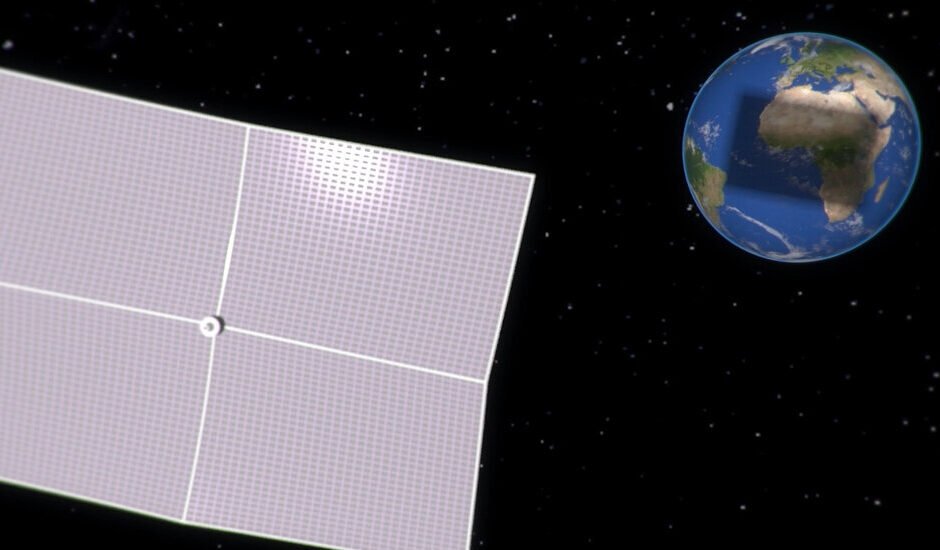Scientists Propose Giant Sunshade in Outer Space to Combat Global Warming
As Earth continues to experience record-breaking temperatures and insufficient efforts are made to address climate change, a growing number of astronomers and physicists are suggesting an unconventional solution: a massive sunshade in space. This concept, reminiscent of science fiction, involves creating a giant sunshade and positioning it in a remote location between the Earth and the sun to block a small but significant amount of solar radiation. By blocking approximately 2 percent of the sun’s radiation, scientists believe the planet could cool by 1.5 degrees Celsius (2.7 degrees Fahrenheit), effectively mitigating global warming.
Although the idea of sun shields has existed on the fringes of climate change discussions for years, interest in this concept has recently gained momentum. Researchers have proposed various approaches to solar shields, such as scattering dust into deep space or creating a shield using “space bubbles.” Astronomer Istvan Szapudi even suggested tethering a solar shield to an asteroid in a paper published last summer.
Now, a team led by Yoram Rozen, a physics professor and the director of the Asher Space Research Institute at Technion-Israel Institute of Technology, claims they are ready to build a prototype sunshade to demonstrate the feasibility of the idea. According to Dr. Rozen, the sunshade would need to cover an area of approximately one million square miles, equivalent to the size of Argentina. However, such a large sunshade would be too heavy to launch into space, so the project would involve a series of smaller shades. These shades would not completely block the sun’s light but would cast a slightly diffused shade on Earth.
Dr. Rozen’s team is prepared to design a prototype sunshade measuring 100 square feet and is seeking $10 million to $20 million in funding to carry out the demonstration. The goal is to show the world that a working solution exists and can be scaled up to the necessary size.
Proponents of the sunshade concept emphasize that this solution does not eliminate the need to reduce greenhouse gas emissions from burning coal, oil, and gas. Even if emissions were reduced to zero, there is already an excessive amount of carbon dioxide in the atmosphere. The Earth’s average temperature is on the verge of rising 1.5 degrees Celsius above preindustrial levels, a threshold beyond which extreme storms, droughts, heatwaves, and wildfires are expected to intensify, posing challenges for both humans and other species. A sunshade could help stabilize the climate while other mitigation strategies are pursued.
Critics of the sunshade idea, such as Susanne Baur, a doctoral candidate focusing on solar radiation modification modeling, argue that it would be astronomically expensive and could not be implemented in time to address the urgency of global warming. They also highlight the potential risks, such as damage to the shield from solar storms or collisions with space debris, which could lead to sudden and catastrophic warming. Baur suggests that resources should be allocated to reducing greenhouse gas emissions and developing more viable and cost-effective solar geoengineering ideas.
Despite the criticisms, proponents believe that reducing greenhouse gas emissions alone will not be sufficient to combat climate change and that exploring all potential solutions is necessary. While a fully operational sunshade would need to be resilient and reversible, Dr. Szapudi suggests that 99 percent of its weight could come from the asteroid it is tethered to, offsetting some of the costs. Although the price tag for a full-scale sunshade would likely reach trillions of dollars, proponents argue that this investment is relatively small compared to military spending.
Supporters of the sunshade idea believe that recent advancements in space technology, along with the falling costs of space launches, have made this concept more viable. The Planetary Sunshade Foundation suggests using raw materials from space and launching solar shade ships from the moon to reduce costs. They anticipate that as the idea gains more attention within the climate research community, it will become an essential part of the discussion.
The proposed Technion model involves attaching lightweight solar sails to a small satellite sent to a point known as Lagrange Point One (L1), where the gravitational forces from the Earth and the sun cancel each other out. The prototype would move back and forth between L1 and another equilibrium point, adjusting the tilt of the sail to control the amount of shade cast on Earth. This design eliminates the need for a propulsion system and ensures the stability of the satellite.
Dr. Rozen acknowledges that the Technion team cannot single-handedly save the planet but believes that their efforts can demonstrate the feasibility of a sunshade solution. While the prototype is still in the pre-design phase, he estimates that a full-scale sunshade could be launched within three years after securing funding. The total cost would be in the trillions, but the potential benefits of reducing the Earth’s temperature by 1.5 degrees Celsius within two years outweigh the expense.
Ultimately, proponents argue that exploring innovative solutions like sunshades is crucial in the face of an escalating climate crisis.




